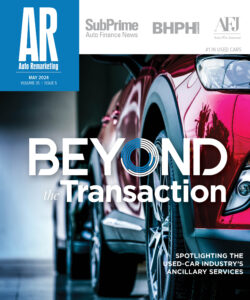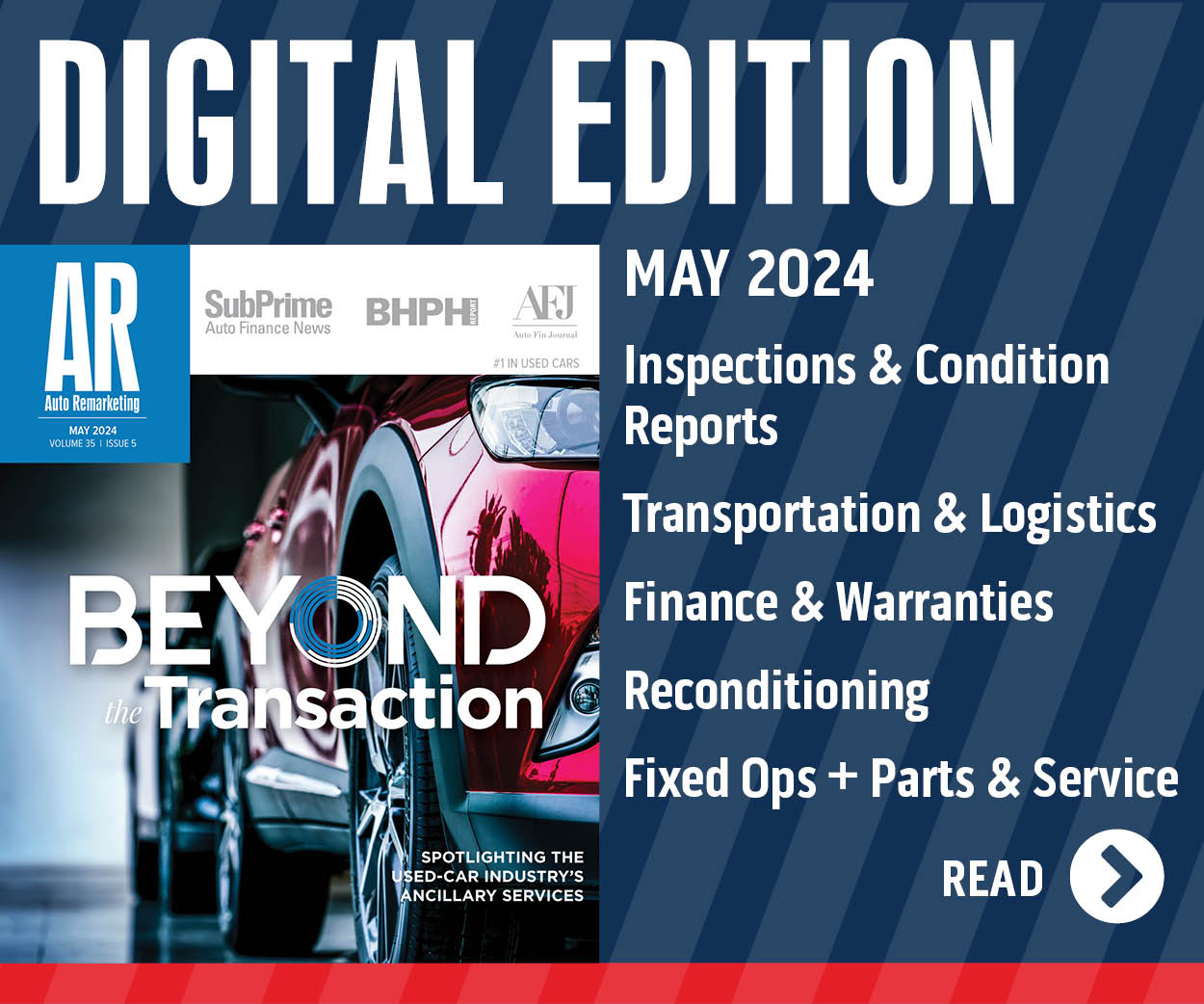Affordability concerns weigh heavily on consumers and could impact the industry’s recovery

High vehicle prices and interest rates are delivering an economic one-two punch that is being felt throughout the used-vehicle ecosystem. Think consumer financing and monthly payments, dealership inventory and certified used vehicles, and residuals and repossessions.
And they’re bound to be among the major discussion points during Used Car Week, set for Nov. 6-9 in Scottsdale, Ariz.
In September, Cox Automotive released data showing that inflation and affordability concerns were the five top reasons consumers who said they plan to buy a vehicle within the next six months, were delaying their purchases.
“Waiting for a better deal or incentive,” was the top reason consumers cited for delaying a vehicle purchase followed by “vehicle prices are too high.” At No. 4 was “interest rates are too high.”
Though the new-vehicle market is beginning to recover and used vehicle market bottomed out in the second quarter of 2023, “the entire vehicle market is and will be limited by total available supply,” said Cox Automotive chief economist Jonathan Smoke during a media presentation in late September. And though the new vehicle market is recovering, the used-vehicle market, especially the supply of nearly-new used vehicles, is limited, he added.
As of late September, the impact of the UAW strike against the Detroit 3 automakers to the retail auto industry was “negligible,” Smoke said.
But if the work stoppage persists into October and beyond, it will impact some new vehicles that are already in tight supply and further cascade into the used-vehicle market, Smoke said. “It’s one of the aspects of a very dynamic, efficient marketplace in wholesale,” he added.
Average used-car loan payments soar
Melinda Zabritski, senior director, automotive financial solutions at Experian, said the average used-vehicle loan amount for franchise and independent dealerships combined was under just $20,000, in the second quarter of 2018.
As the pandemic progressed, used-vehicle prices and loan amounts soared and peaked in 2022. Since then, average used-vehicle loan amounts have eased but hover at almost $27,000.
“We’ve gone from (an average used-car) payment of $377 in 2018; now it’s at $530,” Zabritski said. “That’s pretty significant.
To help find more affordable monthly payments, there has been a shift toward older vehicles, Zabritski said.
In the first half of 2023 the average age of a used vehicle financed at a franchise dealership was 5 model years, up from an average age of 4 model years in the first half of 2018. On the independent dealership side, the average age of a used vehicle financed in the first half of 2023 was 11 model years, up from 10 model years in the first half of 2018.
“We’ve got high (vehicle) values, big demand, limited inventory and interest rate increases. It’s that combination of forces that lead to some pretty serious issues around affordability,” Zabritski said.
Prediction: 2.5 million repos in 2023
Some of those vehicles will wind up being repossessed, predicts Jeremiah Wheeler, president of DRN and MVTRAC.
Between his two businesses, Wheeler expects to recover over 415,000 vehicles for lenders this year up from 335,000 in 2022. RDN Data projects that about 2.5 million vehicles will be repossessed in 2023 up from 1.99 million in 2022 and 2.18 million in pre-pandemic 2019.
During 2020-2022, dealers made more money on vehicle sales, lenders lost less money to loan defaults, and about 27% of the industry’s recovery agency base went out of business because there wasn’t enough volume to go around.
But now as repossessions and lenders’ losses tick upward, the number of agencies in the market has not.
Additionally, some agencies are selective of which lenders’ vehicles they pick up first based on how much they pay and which lenders they won’t work for at all because the pay is too low, Wheeler said.
Considering rising fuel prices, liability insurance and other expenses, Wheeler said lenders should expect to pay recovery agents cost of living increases each year.
Plus, repossessing vehicles can be risky business, he said.
“We’ve had four agents shot just in the last two months and two died,” he added.
Auctions adapt to market conditions
Larry Dixon, the National Auto Auction Association’s vice president of auction data solutions, said auctions know how to adapt to market conditions and are acutely aware of the floorplan expenses that its customers rack up when vehicles languish on lots.
That’s why they offer dealers and consigners a broad selection of frontline-ready vehicles, the latest in reconditioning and repair services and technology and keep vehicle transportation time to a minimal, he said.
“High interest rates impact a dealers’ ability to hold a surplus number on vehicles on their lots” because of floorplanning expenses, Dixon said.
Conversely, consigners such as rental car and fleet management companies and lenders that remarket large numbers of off-lease vehicles, trust auctions to liquidate their assets quickly and efficiently because they’ve done business with them for years, Dixon said.
“Dealers are looking for supply anywhere they can best find it, so if you’re a consigner selling vehicles at physical auctions, (you know) that’s where the dealer is going to go,” he added.
Tom Kontos, ADESA Auctions chief economist, notes that sales of certified pre-owned vehicles were “solid” throughout the pandemic when they became a popular alternative for new car intenders during the supply-chain shortages that impacted new-car production.
But, “the supply of those vehicles has been lean and will continue to be lean because new cars haven’t been selling at the 17 million clip since 2019,” Kontos said. “New-vehicle sales fell below 15 million and below 14 million (in 2022).”
A word of caution for dealers
Contributing to the dearth of late-model used vehicles in the market is that leasing which had been at 30% of the new car market in the middle 20-teens up to 2020, dropped to a low of 16% about 14 months ago, said Michael Buckingham, managing director, auto finance at J.D. Power.
In 2019 and 2020, respectively, about 16 million off-lease vehicles that were 3-years-old and newer, returned to the market. This year, 3-year-old and newer off-lease volume is projected at 14 million and to fall to 12.5 million in 2025.
Buckingham also cautions dealers to be selective about the used vehicles they acquire:
“There is no bubble (in the used-car market) because the used car supply is not there. But dealers still need to be cautious, the gross profits they were getting a year ago is not the same.”
Forecasting residuals is not easy
Eric Lyman, a founder of Remarkit Automotive, an automotive advisory firm, said some of the residual values forecasts set by the industry of late do not reflect the actual increases seen in the marketplace indicating a belief that the high used-car values being seen in the market over the last three years are not sustainable.
About 5 years prior to the pandemic, the average residual value for a 3-year-old vehicle was in the range of 48-49% of MSRP, he said. And, from 2020 to the present, residuals on average have been in set in the mid-50s as a percentage of MSRP, Lyman said.
But the average retained value of a 3-year-old vehicle in the marketplace has been in the mid-60s, as a percentage of MSRP, he noted.
“We’ve seen almost a 20-percentage-point increase in the actual value of a 3-year-old vehicle relative its original MSRP, but its forecast has gone up only 7 or 8 points,” said Lyman who analyzed and crafted residuals values for 20 years that included a stint at ALG.
“Some of expectations that residual value forecasters had that would put pressure on used-car values did not materialize. I did residual value forecasting and it’s not easy,” he said.

 View The Latest Edition
View The Latest Edition

